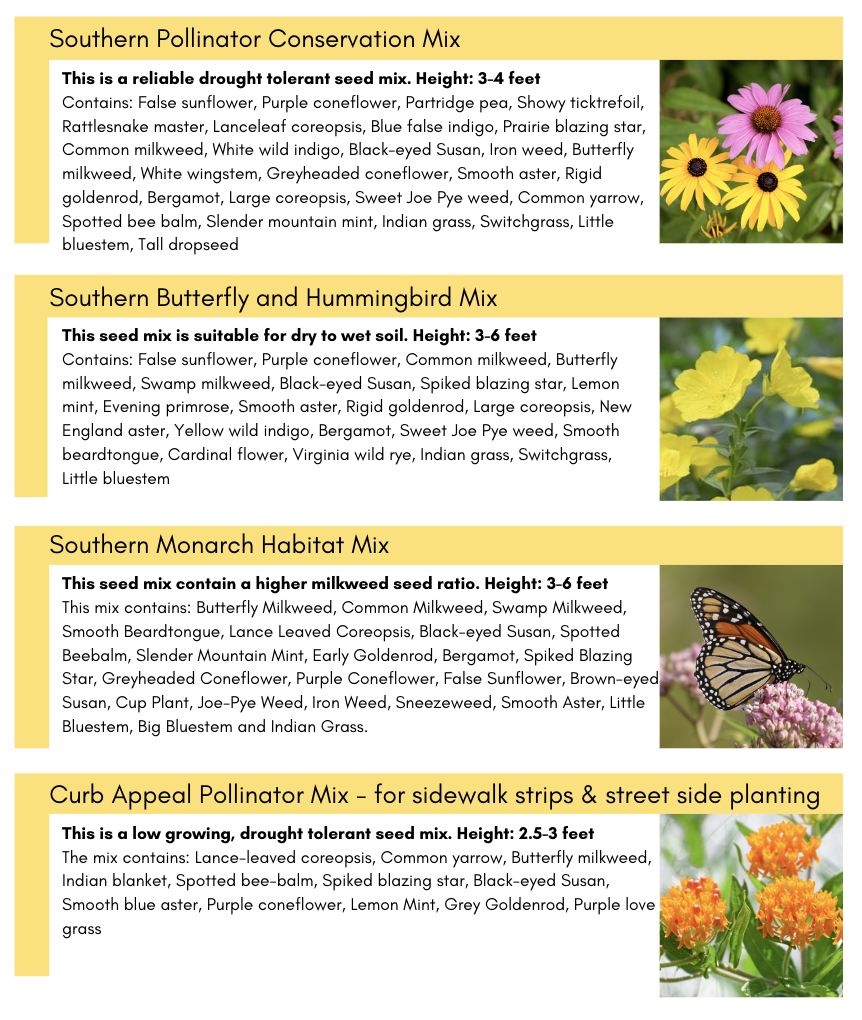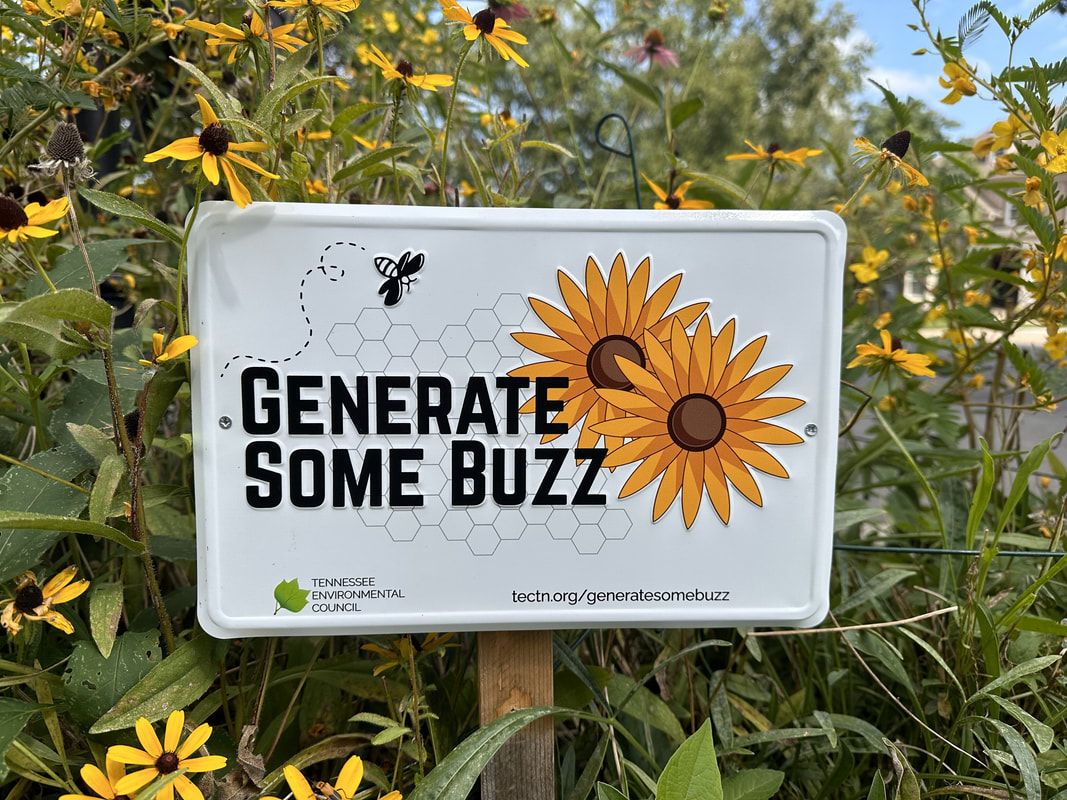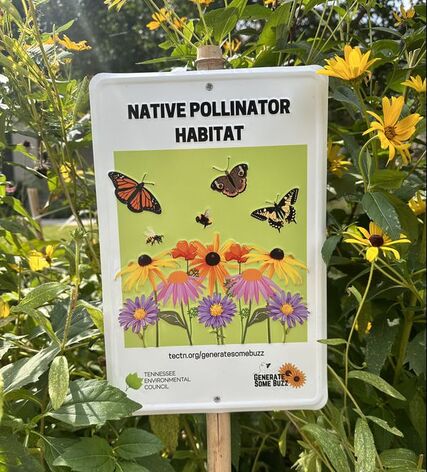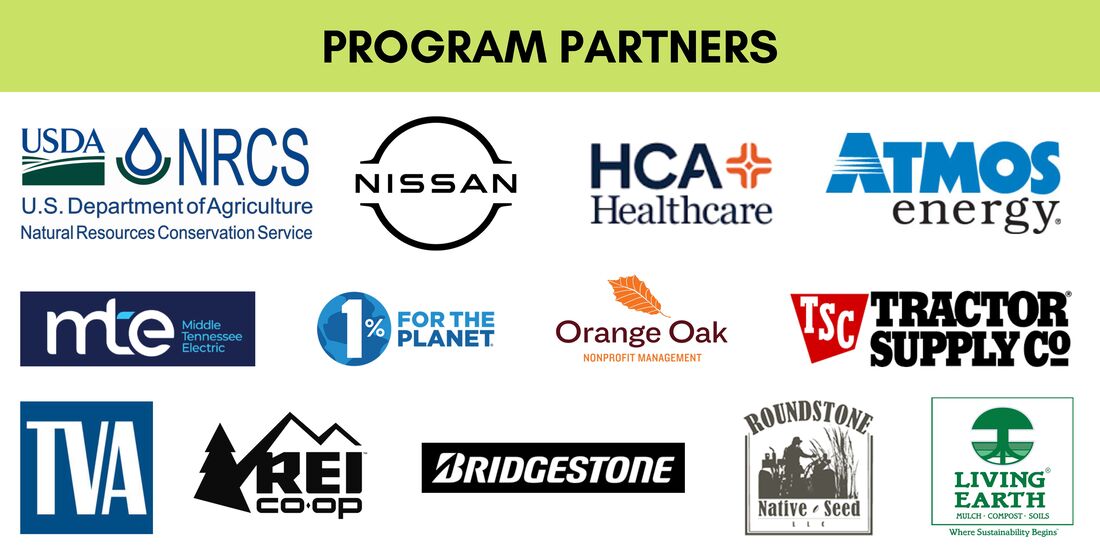Join our community of Tennesseans who are actively carving out gardens to attract, feed & nurture pollinating wildlife.
Received your seeds already? Scroll down for instructional videos!
Received your seeds already? Scroll down for instructional videos!
About The Program:Through Generate Some Buzz, we aim to engage hundreds of Tennesseans in establishing new pollinator habitats statewide. We welcome all gardens, both big and small! By participating in this program, you are joining a vibrant community of Tennesseans who are committed to protecting our pollinators, one plot at a time. Populations of many pollinator species like bees, butterflies, moths, beetles, and hummingbirds have been negatively impacted by agricultural practices such as using synthetic pesticides, disease and habitat loss. These creatures are experiencing a drastically different world compared to just a few decades ago. Native pollinators depend on native plants to provide habitat and food, and plants need pollinators to help them reproduce. In fact, pollinators assist in the reproduction of 75% of flowering plants worldwide. THAT'S HUGE! So, if we turn our manicured lawns that provide little to nothing for pollinators into havens full of native flowers and wild grasses, we will effectively "Generate Some Buzz" and bring back these essential workers full force! |
Vertical Divider
|
Seed Mixes AvailableOur native wildflower seed packets contain seeds grown by Roundstone Native Seed and are superior quality regionally adapted ecotype seeds. For large habitat seed orders please contact Roundstone Native Seed.
|
Getting Started:
Fall through late winter is the best time to sow your native wildflower and grass seeds. Many wildflower seeds require cold stratification for a higher germination rate. This means they must be exposed to freezing temperatures below 40 degrees Fahrenheit to undergo a dormancy period before germinating. In nature, seeds undergo a dormancy phase during wintertime. Therefore, we suggest planting seeds in the fall or winter. If you plan to plant them after the cold season, we advise placing the seeds in the refrigerator for at least 30 days before planting.
Volunteer at a Pollinator Project
We have established gardens in various middle-Tennessee public schools and libraries:
- Stratford STEM High School (est. 2021)
- East End Prep (est. 2023)
- Martin Luther King Jr. High School (est. 2023)
- Isaac Litton Middle School (est. 2023)
- Merrol Hyde Magnet (est. 2024)
- Glengarry Elementary (est. 2024)
- Williamson County Public Library (est. 2024)
- Meigs Middle Magnet School (est. 2024)
- Ravenwood High School (est. 2024)
- Antioch High School (est. 2024)
Additionally, we have created community pollinator habitats in public parks such as Cornelia Fort Airpark (est. 2022) at Shelby Bottoms, Portland Park (est. 2023) and Aldersgate Methodist United Church (est. 2023). We aim to transform monoculture lawns into biodiverse native wildflower habitats.
Click the "volunteer" button below to see our upcoming opportunities.
Get Your Generate Some Buzz Yard Sign!
These signs will show your friends and neighbors that your wildflower garden supports pollinators and hopefully get them excited about starting a pollinator garden too! Our original signs are made from embossed, recycled aluminum and measure 8 x 12 inches. They are available for a donation of $25 each and can be shipped directly to you. To get yours now, click the button below!
|
|
|
388,142 Square feet of new pollinator habitat established in Tennessee
Program Partners:
This material is based upon work supported by the U.S. Department of Agriculture, under agreement number NR204741XXXXG003. Any opinions, findings, conclusions, or recommendations expressed in this publication are those of the author(s) and do not necessarily reflect the views of the U.S. Department of Agriculture. In addition, any reference to specific brands or types of products or services does not constitute or imply an endorsement by the U.S. Department of Agriculture for those products or services.”
USDA is an equal opportunity provider and employer.
USDA is an equal opportunity provider and employer.





